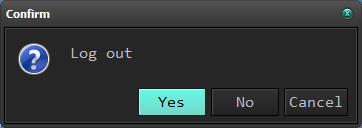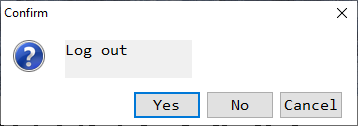

Mark-
-
Content Count
330 -
Joined
-
Last visited
-
Days Won
1
Posts posted by Mark-
-
-
12 hours ago, luciano_f said:The forum has been offline for a while, and that's a problem because there was a lot of information.
Mathias said he has to change his forum access because his provider complained about the high traffic and he is really busy and will get to it.
-
 2
2
-
 1
1
-
-
9 hours ago, Remy Lebeau said:That means the DLL could not be loaded. Either you used the wrong path, or a dependency could not be found, etc.
Did you try using a Delay Load failure hook to find out exactly what is failing? See the example in Delphi's documentation
That path was correct. I tried a few paths to be sure I was not wonky.
I did not try any further. The goal was to convert AVIF files to BMP. I have a sub directory for "tools" that are not needed inside the main application. So, I created a very short application, no user interaction, put it and the four dlls in the "tools" directory and call the application from the main application to get the file conversion done.
Thanks for your help.
-
4 minutes ago, Remy Lebeau said:No, it will not work.
Thanks
I did not think it would work.
Also testing shows, if all the dlls are in the exe path, all works as expected.
Setting all functions to delayed and calling SetDllDirectory before any function is called, it fails, on the first call to the main dll, with:

I tired several path options, no joy.
Thanks for your help.
-
8 minutes ago, Remy Lebeau said:What you are asking for can't be done if you use static linking. You would have to modify the system PATH in order to find the secondary DLLs.
Thanks.
That is what I thought.
When exploring options I looked at "delayed". I will give it a go.
I also wondered if I declared one function from each of the three dlls, (required by the "main" dll) and, used static linking for the the three dlls, if that would work.
-
Hello,
Testing the AVIF image code (https://github.com/Xelitan/AVIF-and-HEIC-for-Delphi-Lazarus/) and have a question about dlls.
The code uses static dll linking:
const LIBHEIF = 'libheif.dll'; function heif_context_alloc: PHeifContext; cdecl; external LIBHEIF;I want to put the dll in a sub-directory of the exe, I use:
const LIBHEIF = '.DLL\AVIF\libheif.dll';That works for the “libheif.dll” but, not the other three dlls that are used by “libheif.dll”.
When running that application, I get:
“The code execution cannot proceed because dav1d.dll was not found. Reinstalling the program may fix this problem.”
for the other three dlls.
Question one, is there a method to have the other three dlls use the path of the calling dll?
Question two, if I go to the trouble of modifying the code for dynamic linking for the “libheif.dll”, would it solve issue? I assume it would not.
Ideas?
Thanks,
Mark
-
Hello,
Old thread back to life.
https://github.com/Xelitan/AVIF-and-HEIC-for-Delphi-Lazarus/
Anyone used it?
Thanks,
Mark
-
4 hours ago, Uwe Raabe said:When working with styles, the Color property of the form is ignored. Unless seClient is removed from its StyleElements property, the forms client space is controlled by the style.
Thanks for your help.
-
14 minutes ago, Remy Lebeau said:Why not use a transparent Label? Otherwise, maybe just get rid of the Panel altogether and draw the text directly on the Form itself using a transparent draw.
Like MessageDlg the dialog (MessageDlg2) resizes based buttons, button captions, based on OS language, font size, etc., and it was cleaner to use a panel. TLabel, at least, had other issues to overcome.
Drawing on the form, I had not thought of that solution. Good idea. I had the framework for a custom panel, from another form, so I grabbed it.
For now, because the only issue is the "Windows" style, window color, I check for it when fetching the window and font color,
Down the road I might look at drawing on the form. It is an interesting, and perhaps a cleaner, solution.
Thanks for your help Remy.
-
3 hours ago, Uwe Raabe said:A TCustomPanel is not filled with a color, but with part of the style bitmap (defined in the GroupBox.Frame object). In a lot of cases this may be similar to a solid color, but it can as well be some texture or even a transparent area for some styles like Amakrits. You might really get the best results with setting the labels Transparent property to True.
I "FillRect" the canvas of the panel, with the color returned by the style manager.
There is not a label. I DrawText the text on the canvas.
Amakrits style works.

-
2 hours ago, Remy Lebeau said:Did you try ParentBackground=True on the Panel? Then you would set only the Form's color and the Panel would pick up the same color.
Yes. ParentBackground state made no difference.

The form color is set to clWindow.
-
6 minutes ago, Uwe Raabe said:What type of control is the Parent of the label (TForm, TPanel,...)?
The text is drawn on a TCustomPanel.
The custom panel is on the form (TForm).
-
-
42 minutes ago, Uwe Raabe said:TUxThemeStyle.DoGetStyleColor(scWindow) returns clBtnFace, not clWindow as you are expecting.
You mean what all the other styles return, I guess I am confused.
Perhaps I am all wet, 10 are correct, one is incorrect; the 1 seems to be the issue.
-
7 minutes ago, Uwe Raabe said:That depends on the definition of correct.
See the examples above.
Correct as in the color returned is the same, or not, as the color of the window.
-
7 minutes ago, MarkShark said:I may be misunderstanding the issue, but I use (Style).IsSystemStyle to check for the "Windows" style.
Thanks for the response.
The issue is:
bgColor:=actStyle.GetStyleColor(scWindow);returns the correct color for all styles I tested, 10 or so, except one, "Windows".
-
Thanks for the response Remy.
OK I can trim down the code.
The text is drawn on a TCustomPanel. I am creating the dialog to replace MessageDlg. Styling is the last test.
What confuses me is TUxThemeStyle.DoGetStyleColor(scWindow) works for all styles I tested, 10 or so, except one, "Windows".
So, I will test with using another selector.
I tested all the selectors, above, with Ruby Graphite and all returned the wrong color:

Interesting...
-
Hello,
I provide the user a menu to select a desired style for the application. I have tested most styles and have trouble with only one, named “Windows”.
As an example:
Ruby Graphite
Windows
The window color for the text is wrong.
Here is the code to fetch the background color and font color:
procedure TDrawingSurface2.GetStyleColors(out bgColor, fColor: TColor); var actStyle:TCustomStyleServices; begin actStyle:=TStyleManager.ActiveStyle; if Assigned(actStyle) and actStyle.Enabled then begin bgColor:=actStyle.GetStyleColor(scWindow); fColor:=actStyle.GetStyleFontColor(sfWindowTextNormal); end else begin bgColor:=clWindow; fColor:=clWindowText; end; end;The else is never triggered.
I can check for the style name “Windows” and return:
bgColor:=clWindow; fColor:=clWindowText;and the dialog is correct.
Any ideas?
Thanks,
Mark
-
1 hour ago, bazzer747 said://Run the report
fRepCompEnrolment.sctRepCustListt.Run;Then, unless I am more confused, fRepCompEnrolment is on the same form, in another form declared in a "uses" on the form, or global.
And "CTRL" left clicking on fRepCompEnrolment, in the IDE does nothing?
-
38 minutes ago, bazzer747 said:A global search in all files doesn't show anything other than the form where I run the Ace Report from.
Then put a break point in the form button. I am confused how you know where the "report" is launched from and cannot find the "report" unit from the calling location.
-
Using search, search all files in the project for the reporter component name and the unusual file name will be it.
-
 1
1
-
-
20 minutes ago, Alberto Fornés said:Yes, it appears as the last message when I log in and subscribe
OK.
> but I don't receive any messages like I see in MQTT Explorer.
Is it the lack of a confirmation the subscribe was successful? or
Is the value in the server changing and you are not being notified?
-
2 hours ago, Alberto Fornés said:I subscribe to a topic,...
Did you receive a SUBACK response when you subscribed?
-
Or at the bottom right:

-
10 hours ago, Fudley said:Where can I find the Top value please?
I would guess at or near the bottom of the object inspector.
![Delphi-PRAXiS [en]](https://en.delphipraxis.net/uploads/monthly_2018_12/logo.png.be76d93fcd709295cb24de51900e5888.png)




New Delphi features in Delphi 13
in RTL and Delphi Object Pascal
Posted
Ditto. I was deposed years ago and the attorney was asking me questions about the code. He had a printout. He got to one part and I said that is not mine. He asked how did I know. I showed him all the code that was mine by the style of formatting I use. That ended the code questions.